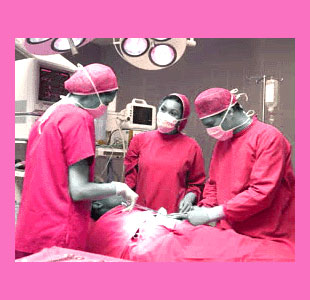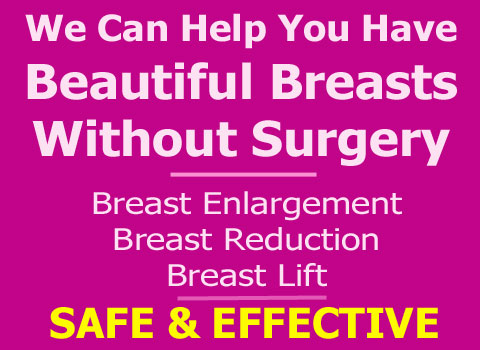
Breast reduction surgery involves an invasive revision of the breasts to reduce size and bulk. Most reduction procedures also utilize mastopexy techniques to raise and firm the remaining breast tissue, creating a more aesthetic and youthful appearance. Breast reduction is also commonly known as reduction mammoplasty.
This dialog provides information about the indications for the procedure, as well as what to expect if you decide to undergo invasive breast size reduction.
Indications for Breast Reduction Surgery
There is no reason to reduce large breasts, unless they bother a woman either physically or emotionally.
Big breasts can be anatomically problematic due to their size and possible pendulous nature. These overly large breasts can cause fatigue, postural change, back or neck pain, skin irritation from bra straps and actual deformity of the upper skeleton, including the spine. Many women complain of serious chronic pain conditions which can make life a living Hell on Earth.
Large breasts are also athletically limiting and can be a big concern when it comes to finding proper fitting and flattering clothing.
Psychologically, many women feel a variety of negative emotions as a direct result of their large breasts. Self consciousness is very common, since prominent breasts often become the focus of public attention.
Body dysmorphic disorders affect many large breasted women who perceive themselves as fat, since their breasts often make them lose a defined hourglass shape. Very large breasts can make a woman lose her waist, especially when clothed, giving her a straight and thick appearance which many women find disturbing.
Well endowed women often suffer associated breast ptosis, which can be a separate and powerful emotional issue by itself. Women will often hate the look of their large sagging breasts, wishing they would be firmer and anatomically higher positioned.
All in all, many ptotic breasted women suffer a generally poor body image, a lack of confidence and reduced physical functionality. Most of these troubled women find themselves wishing for smaller, perkier and more manageable breasts.
Technical Approaches to Reduction Surgery
Full breast reduction is a very invasive and complicated operation. The usual surgical approach is a series of incisions in either the vertical or anchor shaped pattern, allowing access to the inside of the breast.
Excess tissue and skin is removed and interior re-contouring and re-sculpting is accomplished through various means.
The nipple is relocated to a higher, more youthful position on the breast mound.
The remaining skin is then brought together and carefully sutured, creating the new improved breast shape. This new breast will be smaller, anatomically higher, firmer and perkier than the old large ptotic shape.
Overall weight, bulk and movement of the breast is greatly reduced, allowing a more aesthetic look and feel, and well as considerably increased physical functionality.
Risks and Rewards of Breast Reduction Surgery
This is not a surgical procedure to be taken lightly. Reduction mammoplasty is a very grueling ordeal for any woman to endure. The operation is very invasive and will be likely to leave permanent breast scars.
After the procedure, recovery is uncomfortable and will take considerable time.
However, all these considerations aside, breast reduction is still a fantastic option for women who suffer every day due to their overly large and cumbersome breasts. Post-operative reduction patients report some of the highest satisfaction ratings of all cosmetic surgery patients.
The physical and emotional changes which occur in these women are nothing short of incredible. Most women report a better self image, a better quality of life and a more comfortable body, free from pain and disability.
If you are suffering with any large breast-related issues, talk to a qualified cosmetic surgeon to see if reduction mammoplasty is right for you.



